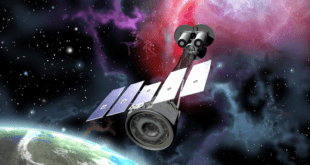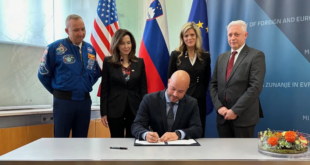by Jose Salgado

Over 14 million photos are uploaded to the Internet every hour, and 85% of them are taken with a smartphone camera using CMOS active-pixel sensor technology. That tech was born at the NASA JPL – Jet Propulsion Laboratory, where the concept of the first digital camera was conceived. While searching for a small, light, and robust image sensor that can resist the extreme environment of space, Eric Fossum and Sabrina Kemeny started to work on the CMOS technology in 1990 that revolutionized the communication industry, and impacted the automotive, surveillance, and medical sectors.
In 1995 Fossum and Kemeny became the first JPL scientists to license their own invention, creating a company called Photobit that became one of the most commercially successful examples of NASA’s spinoff, and a Space Technology Transfer “unicorn”. The current CMOS image sensor market worldwide is projected to grow by $15.5 billion in 2020, with 61.5% of the world’s population owning a smartphone. What is the role of public vs private investment in early space research?
According to Eric Fossum, “Generally I find private funding is not interested in the early research phase when the application space is not so clear and a killer app with large ROI is not identified. General research is not often funded with public funding unless you are solving a very specific problem and/or go through the many hurdles of peer review and conforming to a consensus on what research ought to be performed. So, I am grateful for the early support from NASA and the Department of Defense.”
This shows the importance of public funding towards research, but also forces the space agencies to justify those investments. One way of increasing their ROI is by encouraging the commercial use of space technology. For example, the European Space Agency Technology Transfer Program created or saved 2.500 jobs, generated €24 million in cumulative turnover for European space companies and €300 million for the non-space industries involved.
Dave Anilkumar, Head of the Innovation and Technology Transfer Unit at the Italian Space Agency, pointed out “One of the basic principles of marketing is knowing what your customer would buy (and not what you are selling). Commercialization of space should stick to this rule in terms of making the customers understand better what Space Technology can do for them.”
The Technology Transfer Unit has a wide range of applications across many traditional sectors, like agri-food, mobility, energy, and medical, but what are the non-traditional industries that can benefit from licensing Space Technology in the future? “Automotive, household appliances, heavy industry, banking, and finance will be the next interesting users. The future will witness more and more cross-contamination and launch of new sectors or businesses not present in the past decade. A sort of new APOLLO effect.” says Dave Anilkumar.

President of the Canadian Chamber in Italy, a Chamber 2.0 that focuses on innovation and new technologies. Honorary advisor to the Italian Intergovernmental committee for space. Columnist at COSMO magazine and Business Insider Mexico. Space Economy advisor.





